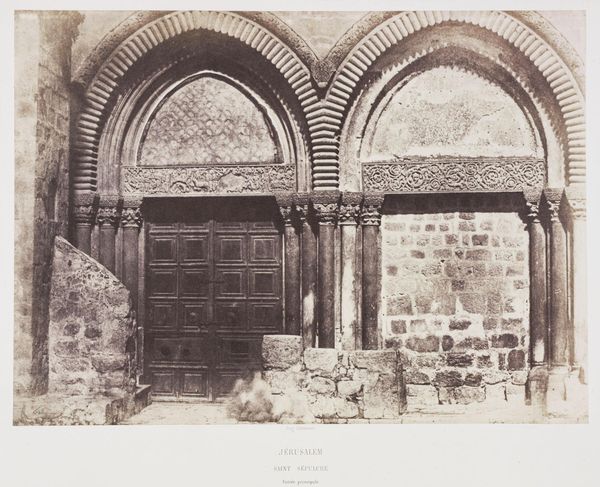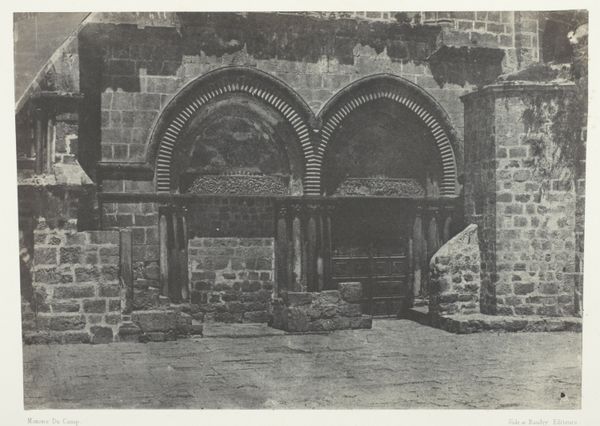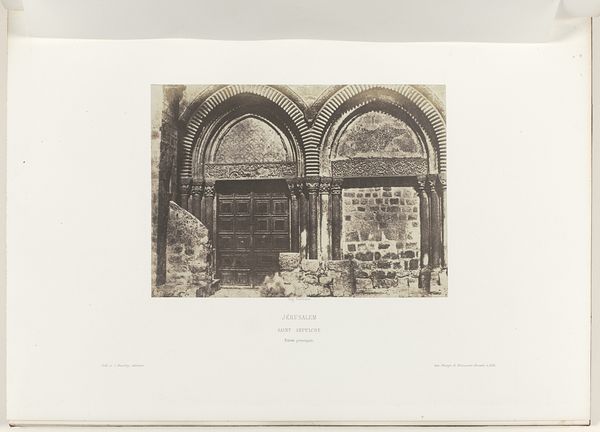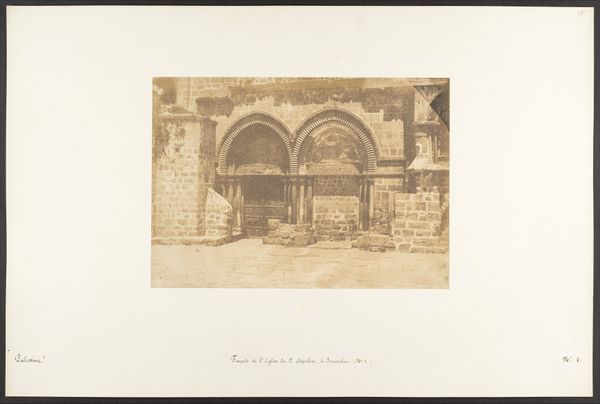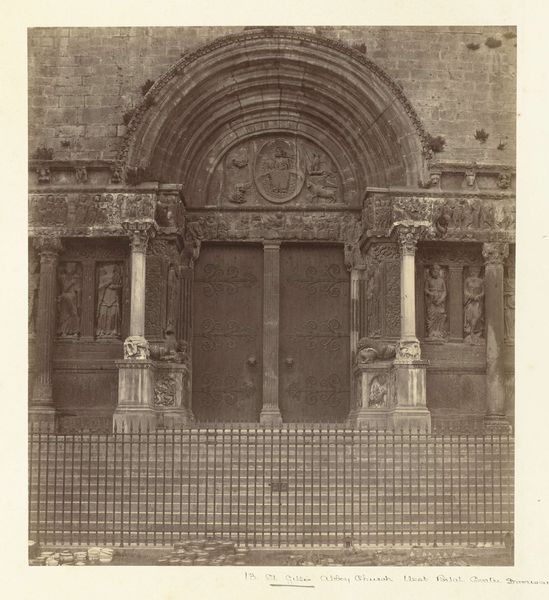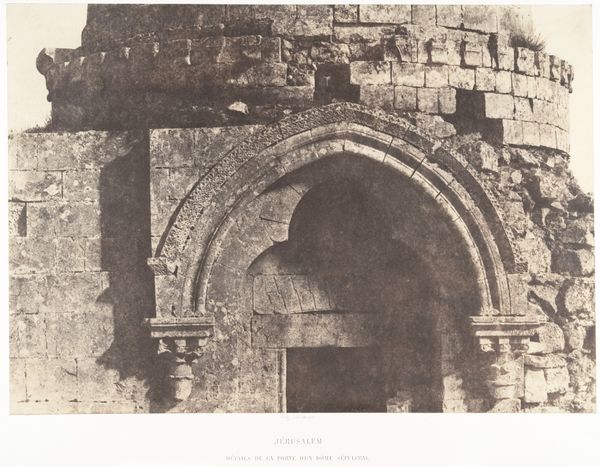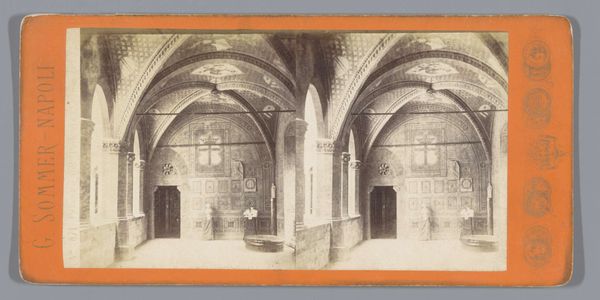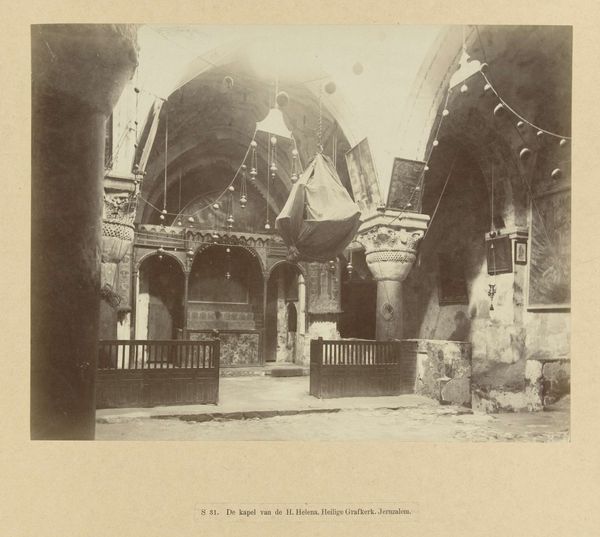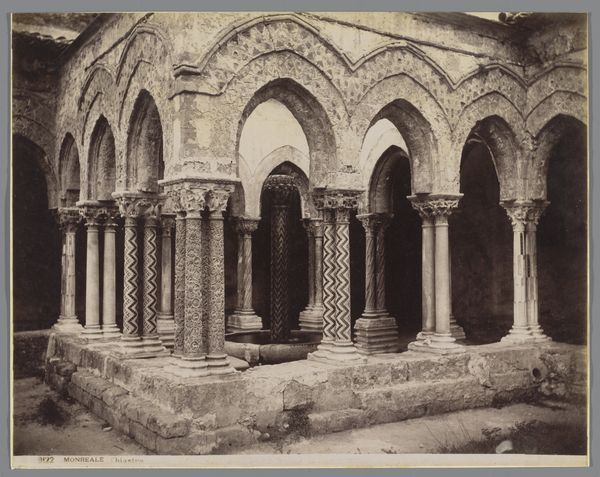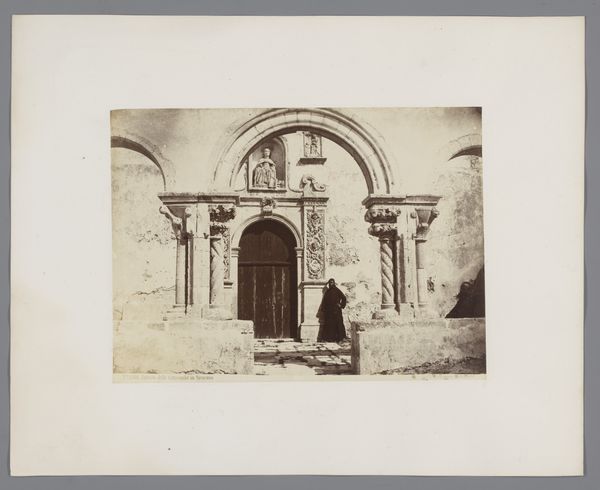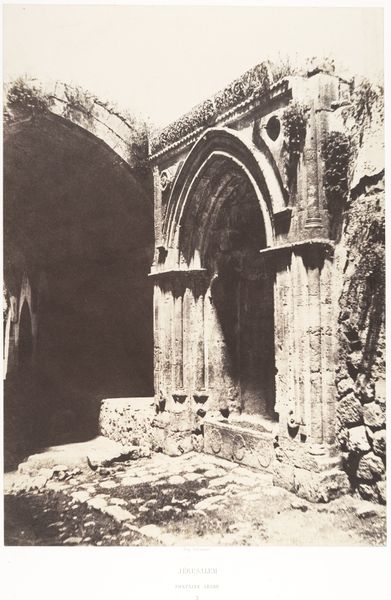
Jérusalem, Saint-Sépulcre, Entrée principale 1854 - 1859
0:00
0:00
daguerreotype, photography, architecture
#
landscape
#
daguerreotype
#
photography
#
ancient-mediterranean
#
arch
#
architecture
Dimensions: Image: 23.4 x 32.4 cm (9 3/16 x 12 3/4 in.) Mount: 45 x 60.1 cm (17 11/16 x 23 11/16 in.)
Copyright: Public Domain
Curator: Today we're examining "Jérusalem, Saint-Sépulcre, Entrée principale," a daguerreotype created by Auguste Salzmann between 1854 and 1859. Editor: It's stark, almost austere. The image’s sepia tones convey a somber stillness, and the architecture projects a weighty, imposing presence. There's something powerful about its symmetry and decay coexisting. Curator: Salzmann's choice of the daguerreotype process is crucial. He would have used iodine-sensitized silvered copper plate and mercury vapor. His sharp focus allows for an objective examination of the built environment. One could describe it as a documentary method reflecting his desire to capture verifiable truth about this place. Editor: Yes, but "verifiable truth" is always contextual. Consider how the Church of the Holy Sepulchre holds layers of contested history, being the site of Christian pilgrimage while also being a nexus of political and religious struggle across centuries. This image, appearing during European colonialism, reflects a very specific gaze. Who has access, who is excluded, and how that informs the representation matters. Curator: Agreed, and Salzmann worked with figures like Félix de Saulcy who hoped his work would advance archeological and biblical understanding through documentation. But look closely, and we see signs of constant work on and around the doors. You see the differential weathering across brick and mortar? Materially, the structure itself bears witness to countless human interventions across millennia. Editor: That attention to material detail humanizes what might otherwise seem like a sterile, imperial record. I'm thinking, how did labor practices then, impact representation? This church continues to be stewarded and maintained; thinking about the hands, largely unseen, shaping this monument encourages consideration beyond pure aesthetics. Curator: Precisely! The photograph’s value isn't solely aesthetic or historical. It presents us with complex dialogues concerning photographic agency, the materials of faith, and human intervention over time, urging us to consider the very construction and maintenance of narratives, both tangible and abstract. Editor: Ultimately, the photograph freezes a particular moment but prompts reflections on wider themes that remain extremely present and crucial.
Comments
No comments
Be the first to comment and join the conversation on the ultimate creative platform.
